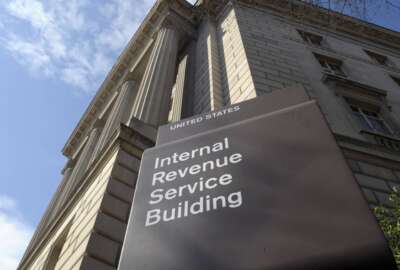‘Trench war’ coming over whistleblower lawsuits
Supreme Court ruling comes with a dissent that could lead to a constitutional challenge to qui tam cases
Like hot dogs and buns, whistleblowers and qui tam cases often go together. Qui tam is just the first few words in a Latin sentence describing the act of bringing a lawsuit on behalf of both the government and yourself.
For many years, the government has received billions of dollars in False Claims Act (FCA) recoveries for a variety of frauds. False claims come to light under many programs such as Medicare and Medicaid, COVID relief programs and contractor billing. The Justice Department reports that in fiscal 2022, it took in $2.2 billion in FCA settlements. Most of it — $1.9 billion — came from qui tam lawsuits: motivated whistleblowers who sued and eventually received $488 million of the recoveries.
Easy money it’s not. For whistleblowers, the day of settlement often comes after years of litigation, reprisal and harmed careers, in spite of the statutory protections against this sort of retaliation.
Washington, D.C. whistleblower attorney Stephen Kohn of Kohn, Kohn & Colapinto, doesn’t just defend whistleblowers, he believes fervently in them and in whistleblowing itself. In the introduction to his latest book, “Rules for Whistleblowers,” Kohn states what whistleblowing “has dramatically evolved into a cornerstone for enforcing anti-corruption laws.”
In an interview, Kohn said the Supreme Court threatens the whole qui tam whistleblower apparatus. Oddly, this is both because of an 8-justice ruling, and also because of the 1-justice dissent.
Kohn and attorneys have examined closely last month’s 8-1 decision in a whistleblower case against a health care provider. It’s technical. Even the justices called the case a “thicket.” But the justices ruled, with Justice Clarence Thomas dissenting, that the government could seek dismissal of a whistleblower lawsuit even if the Justice Department declined to get involved early on. There’s a sealed period after a whistleblower files a secret complaint. That period is normally when the government gets involved and can decide whether to dismiss a case. After that, the DOJ loses its authority to dismiss. Until now.
Kohn said this may not make a lot of difference in practice, because of the infrequency of DOJ intervention. Of the case leading to the decision at hand, he said, “It’s almost neutral, because it very rarely comes up.”
What he’s worried about is the Thomas dissent. In it — it starts on Page 27 of the 37-page ruling — Thomas questions whether whistleblower False Claims Act lawsuits on behalf of the government are constitutional in the first place.
“The FCA’s qui tam provisions have long inhabited something of a constitutional twilight zone. There are substantial arguments that the qui tam device is inconsistent with Article II and that private relators may not represent the interests of the United States in litigation.” Basically, Thomas argues only members of the executive branch can litigate on behalf of the government. He cites case law in support.
Thomas added, a bit ominously, “It thus appears to follow that Congress cannot authorize a private relator to wield executive authority to represent the United States’ interests in civil litigation. The potential inconsistency of qui tam suits with Article II has been noticed for decades.”
And he urged the court to remand the case to the Third Circuit for a constitutionality test. Justices Brett Kavanaugh and Amy Coney Barrett agreed with Thomas on that point, even though they concurred with the majority on the narrower case.
Kohn says he believes this will potentially pinch off “all other types of laws that empower citizens to defend rights,” such as environmental actions against polluters. He points out that qui tam cases date to medieval England. Qui tam litigation occurred during the days of the Continental Congress. The False Claims Act itself dates to 1863; Congress last revised it in 1986. Kohn worries an ancient and honorable system of redress could end with a constitutional challenge.
By the time of the Revolutionary War, qui tam “was a basic, well established, unquestioned law enforcement tool,” Kohn said. “That was what all the colonies were using, that was clearly understood by every founding father, every founder of the United States.”
Should the fundamental challenge to qui tam arrive, Kohn said, “It’s going to be trench warfare.”
Nearly Useless Factoid
From 1979-1984, the Swiss government dropped chicken heads containing the rabies vaccine from planes to try to eradicate rabies from the fox population.
Source: The Atlantic
Copyright © 2024 Federal News Network. All rights reserved. This website is not intended for users located within the European Economic Area.
Tom Temin is host of the Federal Drive and has been providing insight on federal technology and management issues for more than 30 years.
Follow @tteminWFED






